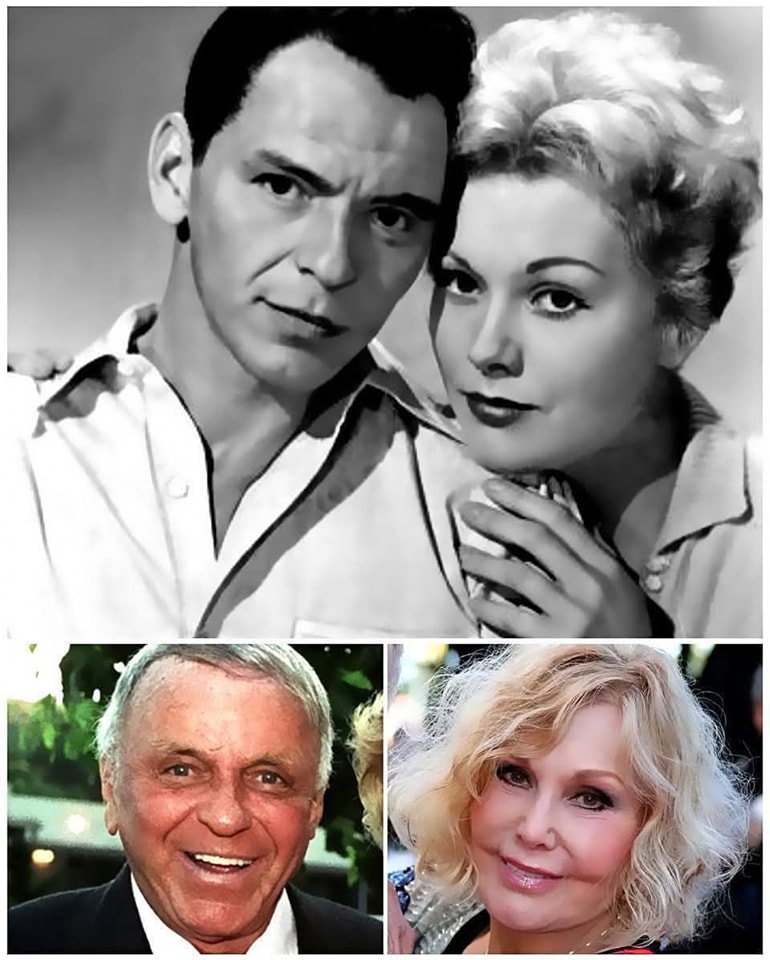During the filming of “The Man with the Golden Arm” in 1955, Kim Novak was a rising star, young and uncertain in front of the camera. Her co-star, Frank Sinatra, was already an icon. Director Otto Preminger described Novak’s nervousness with vivid clarity, as some scenes required more than thirty takes. Yet, Sinatra never showed irritation. He remained calm, encouraging, and quietly protective of her on set. When the pressure of the role became too much and she temporarily stepped away from filming, Sinatra responded in a way that surprised everyone: he sent her the complete works of Thomas Wolfe, a literary gesture of comfort and understanding that revealed the depth of his compassion.
Their connection extended far beyond the camera lens. In a 2021 interview, Novak admitted that she and Sinatra were romantically involved during that period. She described him as “a very sexy guy,” but the attraction ran deeper than physical chemistry. Novak admired his sincerity, his unpredictability, and the emotional intensity that simmered beneath his public persona. “He’s real. He’s honest,” she said during their time together. “That’s why he gets into trouble constantly.”
Their second collaboration came two years later in “Pal Joey,” a musical drama where their on-screen dynamic hinted at a more intimate, unspoken connection. Sinatra, who played the charismatic but flawed Joey Evans, shared scenes with Novak’s Linda English that were charged with understated tension. On set, the two maintained a professional demeanor, but those who observed them closely noted the glances, the quiet moments between takes, and a certain electricity that couldn’t be faked.
Behind closed doors, Sinatra made bold, romantic gestures. One night in the mid-1950s, legendary trombonist Paul Tanner received a call close to 11 PM from Nelson Riddle, Sinatra’s frequent collaborator and arranger. Sinatra wanted to gather a full orchestra at Capitol Studios immediately. “That means triple scale,” Tanner reminded him. Riddle replied, “Don’t worry, you know he’s good for it.” When Tanner arrived at the studio, he found nearly two dozen of the finest musicians in town already there, including trumpet player Harry “Sweets” Edison.
There was no producer present, only an engineer and Sinatra. Sitting quietly in the back of the studio was Kim Novak, alongside Frank Military, Sinatra’s close friend. The orchestra ran through nearly ten songs, none of which were recorded. Tanner later recalled that Sinatra’s only goal that night was to serenade Novak. It wasn’t for a record or a performance, it was purely for her. When the impromptu concert ended, Sinatra thanked each musician, ensured they’d be paid, and then took Novak’s hand and disappeared into the night.
This spontaneous display of affection underscored a part of Sinatra that the public rarely saw. Known for his tough exterior and no-nonsense attitude, he could also be extraordinarily tender. His relationships were often tumultuous, but with Novak, there was a protective softness, perhaps because she, too, had been forged in Hollywood’s fire but still retained a quiet vulnerability.
Sinatra’s interest in Novak came during a period of personal transition. He was divorced, deeply invested in his music, and carefully selecting film projects that challenged his image. Novak, meanwhile, was navigating a studio system that often treated her more like a product than a person. Their brief relationship was never splashed across tabloids, and both remained discreet, but those who witnessed it firsthand never forgot the intensity between them.
Frank Sinatra died in 1998 at age 82 from a heart attack after years of declining health. Kim Novak, now in her early 90s, lives a quiet life away from Hollywood, having left the industry behind
Credit to the respective owner~
